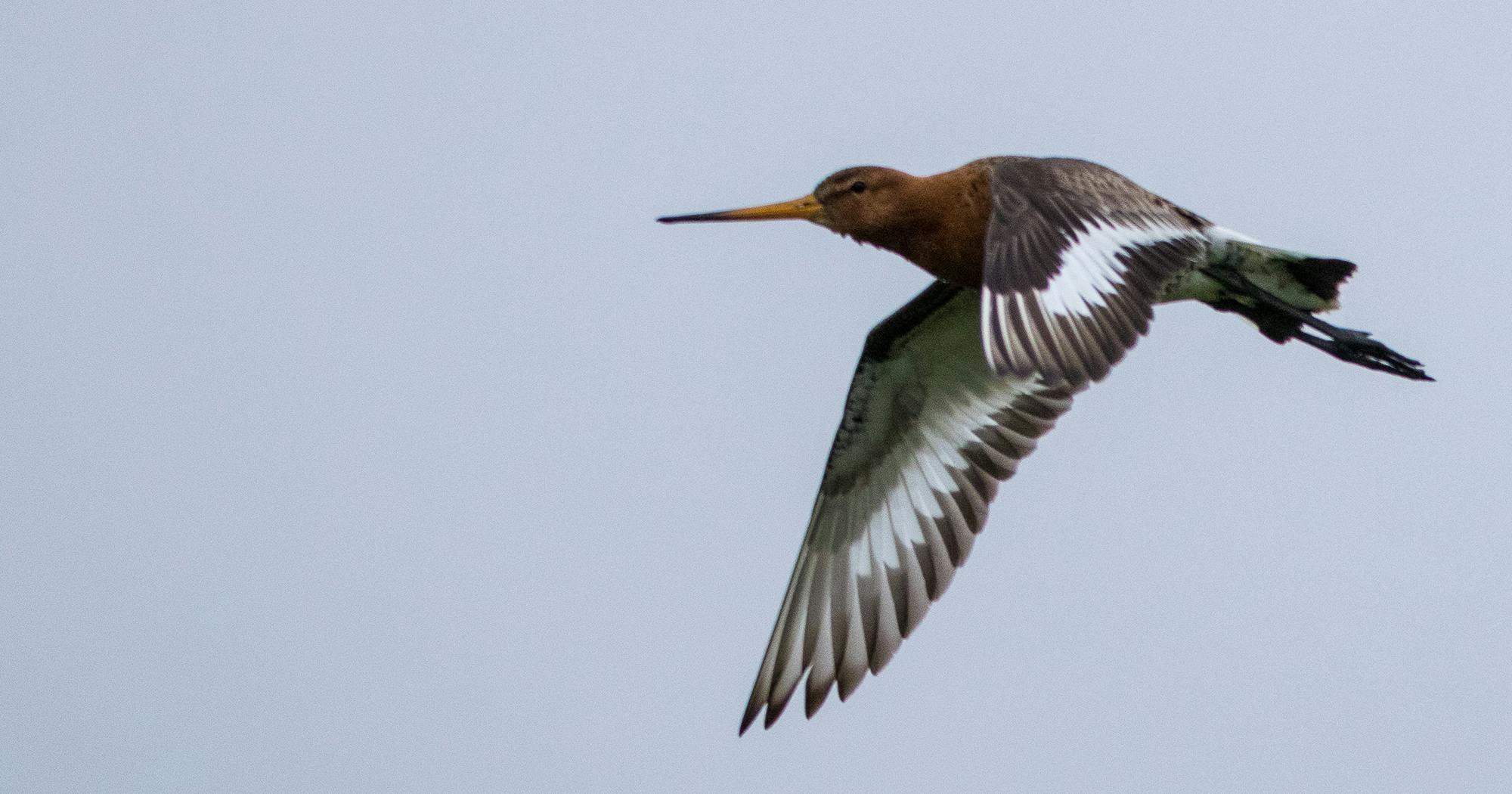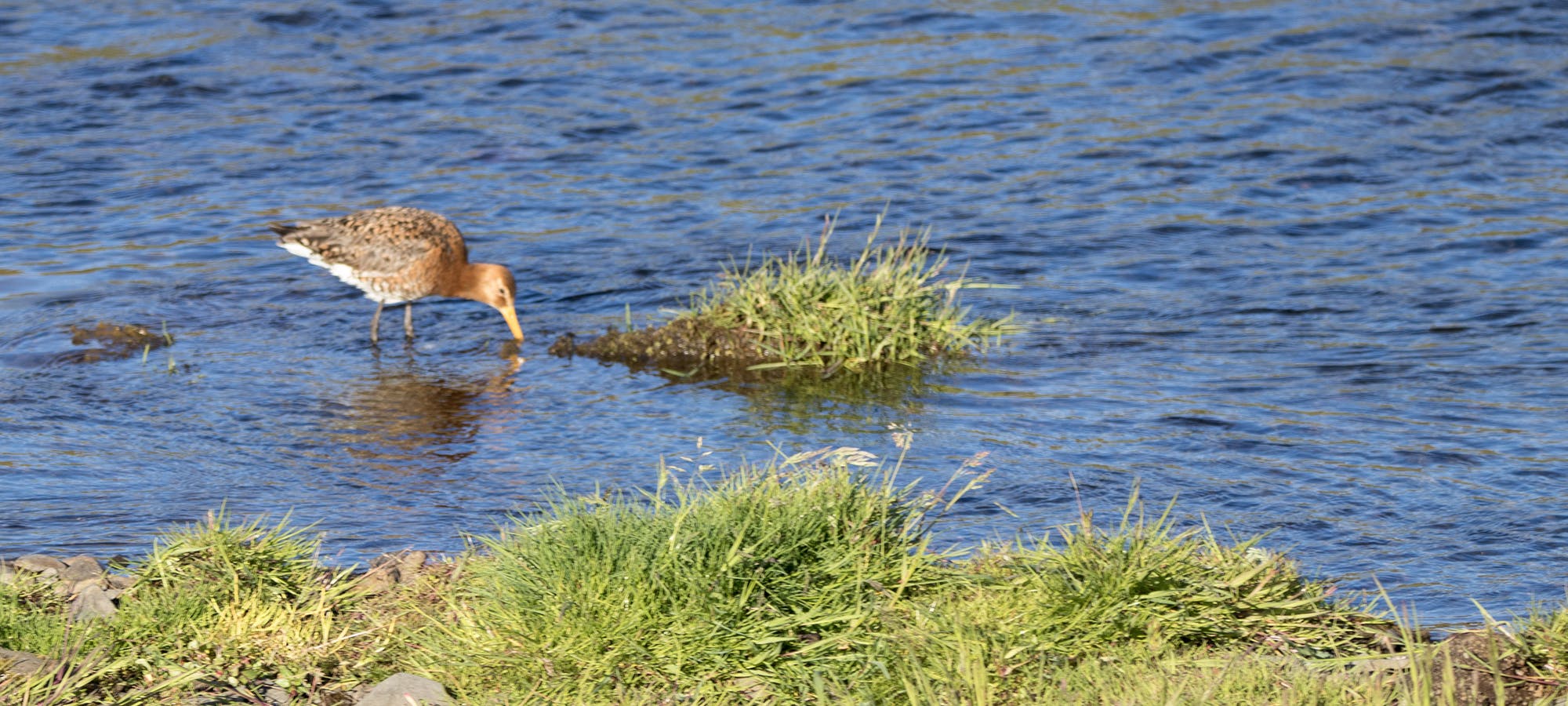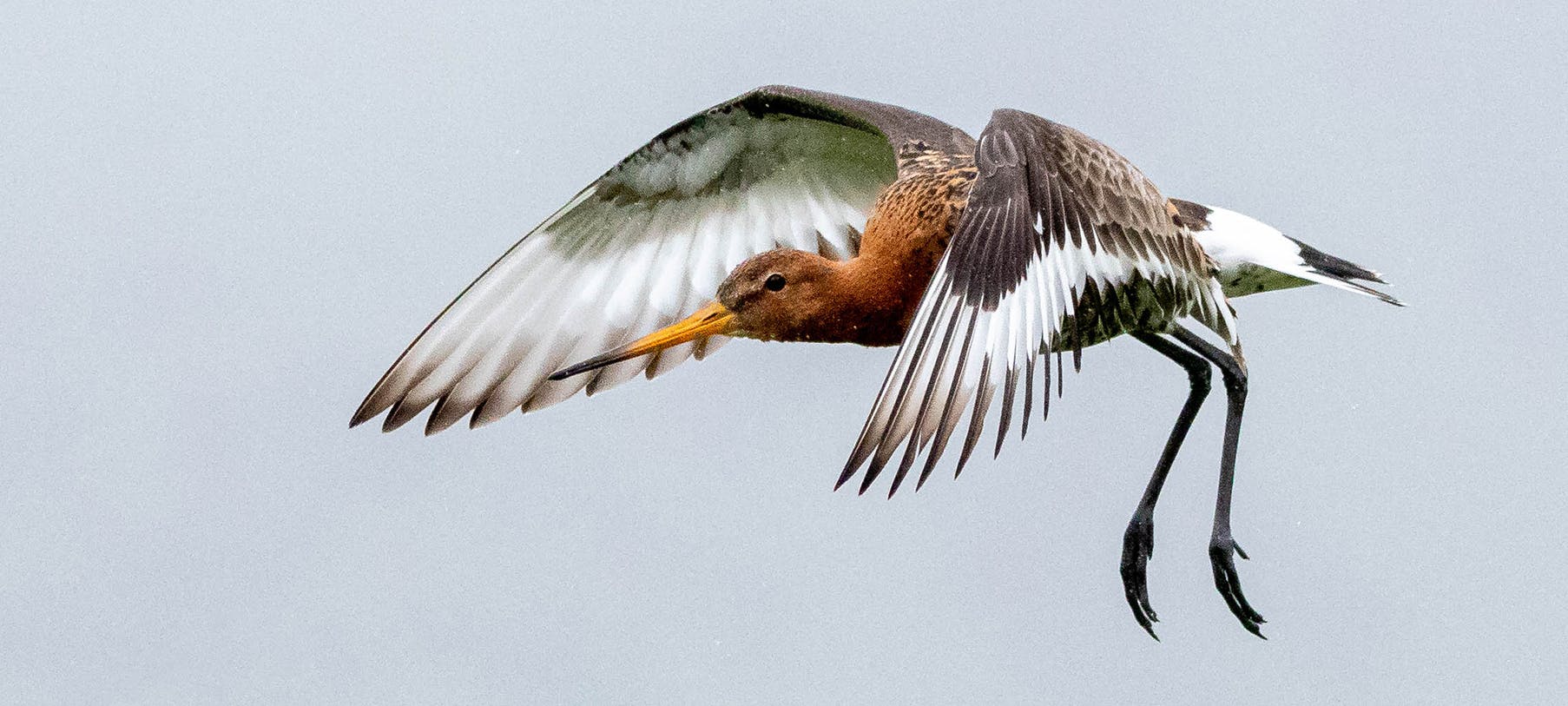
Spot the Black-tailed Godwit
The black-tailed godwit (Limosa limosa islandica) belongs to the waders (Charadrii) but is of the Scolopacidae family. It is closely related to the redshank (Scolopacidae) and the whimbrel (Numenius phaeopus) within the subfamily Tringinae. This subspecies nests mainly in Iceland but has also been observed at a few destinations in western, mid-Europe, and eastern Russia. The black-tailed godwit is a migratory bird, and the Icelandic population spends winters in Great Britain, France and on the Iberian peninsula (Portugal, Spain, Morocco).
To learn more about Icelandic nature and wildlife, visit the Perlan Museum in Reykjavík. Here, you can dive deeper into every aspect of what Iceland’s wonders have to offer. This interactive museum is a great experience for all ages, giving you a unique opportunity to experience Iceland in one place. Read more about the exhibitions Perlan Museum has to offer here.
Striking Features of the Black-Tailed Godwit

The black-tailed godwit has long legs, the length is 40-45 cm (15.7-17.7 in), and the bird weighs 0.4 kg (12.35 oz). The wings are large compared to the body size, with a wingspan of 70 - 8 cm (27.6-32.3 in). The head, neck, and chest have a characteristic rusty brown colour, but the back is greyish, and the belly is creamy. A dark wingtip and tail are noticeable during flight, along with white wing bars and rump. The bill is long, straight and yellowish with a dark tip. The long feet are grey or black, extending from the bird's tail during flight. The sexes look alike, but the male has brighter colours during the nesting period. The winter plumage is dull greyish.
Distribution and Population Size
The black-tailed godwit was first nesting in south and southeast Iceland but dispersed all around the country after 1920. In north Iceland, the first nest was observed at Lake Mývatn in 1963, and a few years later, it occupied all of east Iceland. The population has grown intensively, and today, the bird is found all over the country. However, south Iceland is still considered the most important habitat. The black-tailed godwit is most common in wetlands or farmland and is always close to water. The population size is not fully known but was recently estimated at 68.000 breeding pairs.
Nesting Habits of the Black-tailed Godwit

The black-tailed godwit arrives in Iceland at the beginning of April. Both in spring and autumn, it stays at shores, mudflats and river islets where food is abundant. The most important feeding sites are in Borgarfjörður, Álftarfjörður and the river islets at Eyjafjarðará, where hundreds of birds accumulate and feed before and after their annual migration. The birds wait at the nesting site for their companions to arrive, as the pairs do not necessarily migrate to the country together or even spend winters in the same country.
Most pairs arrive at the nesting site at the same time, but if the male is late, it can result in a divorce. How the pairs plan their migration to the nesting site and arrive at the same time is a mystery. After a short courtship, the birds choose a nesting site on a grass stop or other dry place close to a wetland where they lay 3-4 eggs. The egg weighs about 40 gr (1.4 oz.) The black-tailed godwit is a social bird and often nests in sparse colonies in wetlands.
Breeding Ecology of the Black-tailed Godwit
The black-tailed godwit is a monogamous bird that lays eggs in a small dent insulated with dry hay and hidden in vegetation. The eggs are dark brown or olive green with spots and hatch in 22-24 days. Both sexes incubate. The young leave the nest 24 hours after hatching and follow their parents to the feeding grounds. The young roam the area under their parents’ protection until able to fly at 25-30 days old.
What Do They Eat – Where Do They Go?

The black-tailed godwit is an opportunist when it comes to feeding. In spring and fall, it is often seen at mudflats eating polychaeta, gastropods and all sorts of invertebrates. During the nesting period, it feeds on the most abundant invertebrates in the nesting area, mostly worms and insects. Late summer, it also feeds on seeds and berries. The black-tailed godwit is very social when feeding and is often seen in large flocks in newly mown fields and mudflats.
The young feed mostly on insects, but as they mature, their diets become the same as adults. In September, the birds accumulate and leave the country. The females leave first, but the males stay with the young until they can fly. Some flocks migrate to Great Britain, but others to the Iberian peninsula.
The Icelandic Name
The Icelandic name for the black-tailed godwit is „jaðrakan“, which is of unknown origin. The word is found in all genders in Icelandic as „jaðraki“, „jaðrekja“ and „jaðrakön“. It is assumed that the name is a loanword from Gaelic „adharcan“ which is the name of the bird lapwing (Vanellus vanellus), or even from „jaðrakona“ which is the name of water rail (Rallus aquaticus) in Faroese.
Five Facts about the Black-tailed Godwit

- The black-tailed godwit becomes sexually mature 1-3 years old.
- It is common that the black-tailed godwit becomes 15 years old but the oldest known bird was 23 years old.
- The Icelandic name „jaðrakan“ is strange but is dated in Icelandic literature back to the year 1300.
- The black-tailed godwit is noisy at the nesting site and scares off intruders with high pitch sounds. „Vigga, vigga“, „vita vita“ and „vaddúdí vaddúdí“ are the most common sounds.
- The population size of the black-tailed godwit has increased in Iceland the last decades and it has occupied new areas all around the country.
Popular articles

Reykjanes Volcanoes Overview
Enjoy a complete overview of the Reykjanes Volcanoes from 2021-2024. Learn about its geology, recent activity, and visitor tips for a safe, memorable experience.

Reykjanes Peninsula Volcanoes: Sundhnúksgígar Eruptions
The anticipated volcano has erupted in the Reykjanes Peninsula, the site is being called Sundhnúkagígar. See the historic insights on the seismic activity and volcanic eruptions.

Earthquakes in Iceland
Earthquakes in Iceland are a fact of life. Each year, hundreds of small tremors shake the earth, a reminder of the country’s position on a tectonic plate boundary.

Volcano Museums and Exhibitions in Iceland
If you don't manage to visit an actively erupting volcano in Iceland - Experience its force at one of these excellent volcano museums and exhibitions in Iceland.

Top 10 Places To See the Northern Lights in Iceland
You can see the northern lights across the country, but some spots are more suitable than others. Find the best place to see the northern lights in Iceland.

Ice Caves From Reykjavik
Travel beyond the capital for a closer look at an ice cave under one of Iceland’s glaciers. If you can’t spare the time, experience Perlan’s ice cave in Reykjavik.